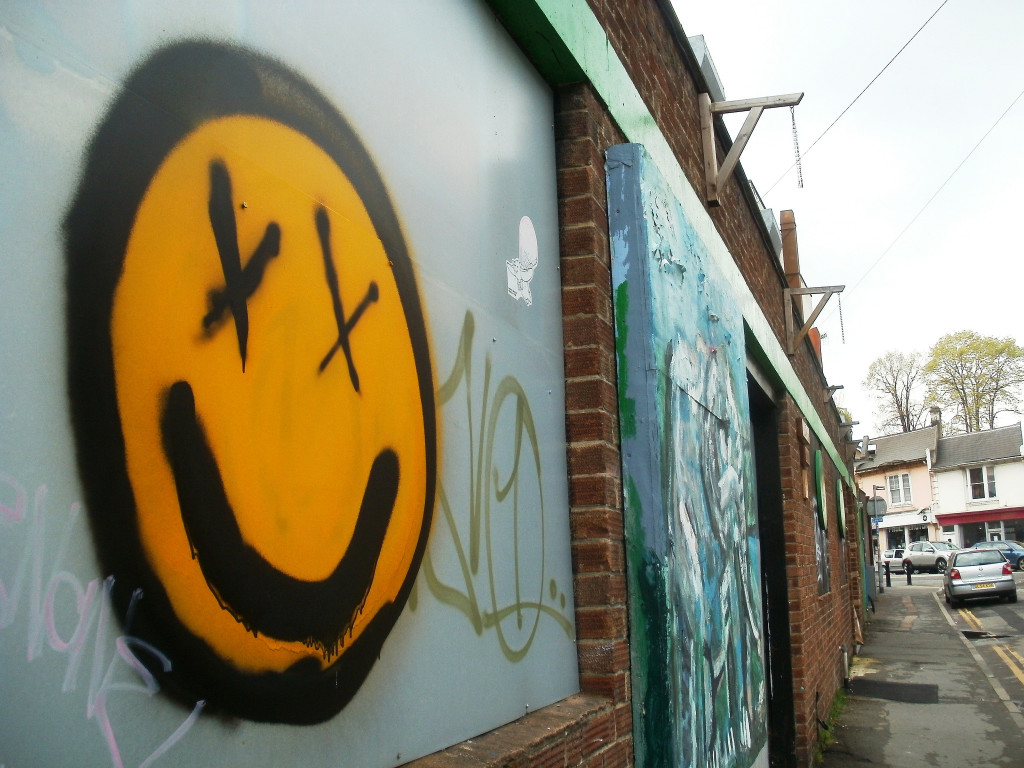
Montage of Heck shows the world that there may have been no saving the “Spokesman of a Generation.” Feral78 / Flickr
Kurt Cobain had no idea how to be a rock star. He also had no idea how to be a person. His family made sure of that. By the eighth grade, he had resolved to kill himself. After a failed first attempt, he decided to hang around a little longer—get laid, write some songs, become the unwitting spokesperson of a generation, and change the world. Once he crossed the final item off his to-do list, he took a bow and crossed himself off too. And that’s the only way it ever could have happened, because that’s the way everyone wanted it.
Brett Morgen’s new documentary Kurt Cobain: Montage of Heck is an astoundingly intimate, probing, and completely unflinching account of a man whose sheer and utter loneliness gave birth to some of the most moving and captivating art of the late 20th Century. Here we see Kurt Cobain in his final days—scabby, emaciated, loopy, his wife Courtney asking him, “Do you want your daughter to see you like this?” Well, now the whole world can see him. He’s the little fucked up present we gave ourselves.
Clocking in at a Sunday-ruining 2.5 hours, Montage of Heck tells the story of an insanely talented musician whose family rejected him because he was too complicated, hyperactive, and sensitive to love. And as a result, he became a reprehensible drug addict.
Kurt was nine when his parents divorced, and the schism marked a turning point in his developmental years. From that point on, he was passed back and forth from mother, to father, to aunt and uncle, to grandma and grandpa like a re-gifted present. To Kurt, the message was clear as a bell: I am unwanted. Who knows what he might have become if his family cared about him? For one, he would not have turned into the Cobain we know today. An artist? Probably. A musician? Hopefully. Alive? Almost certainly. But that’s not the way things shook out. Kurt is dead and we have Nevermind. This is, at best, a wash.
Could anyone have saved Kurt Cobain? Let’s start with his bandmates—specifically, the suspiciously absent Dave Grohl. In nearly any interview with the band made available during and after Kurt’s death twenty years ago, it never seemed like Kurt and Dave were close. Unlike bassist Krist Novoselic, Dave wasn’t a childhood friend from Aberdeen, Washington. Grohl was a hired gun—a fantastic drummer that provided the final third of the complete package. Grohl has always appeared to be a positive guy who isn’t into drugs. He’s a workman, a virtuoso. He could play everyone’s instrument in Nirvana twice as well as they could. For all his artistic prowess, it could be forgiven if Grohl is only interested in making as much music as humanly possible and getting paid for the pleasure of doing so. Though director Brett Morden says that Grohl’s interviews were conducted too late to make it into Montage of Heck’s final cut, it’s hard to believe that neither Grohl nor the filmmakers could find time to include his thoughts on Cobain in the film. What seems more likely, however, is Grohl answering Morgen’s call with a succinct, “I’m not interested in being interviewed for the millionth time about Kurt’s death. I have eight bands to play in.”
What about Krist then? If anyone was going to save Kurt, it should’ve been Krist. Sad as it is to say, it doesn’t seem like he saw it coming despite the signs being everywhere. It’s virtually impossible not to feel for Novoselic after watching his interviews in the film: He has the air of a soccer dad who narrowly survived a Category Five hurricane. Imagine, for a moment, being Novoselic: an 18 year old playing for beer and weed money in your friend’s band. That band ends up becoming the biggest band in the world. Your friend then kills himself with a shotgun. You spend the rest of your life splitting your time between little-known musical side projects and doing interviews about said friend’s suicide. That Novoselic can stay true to his affinity for excellent tee shirts after that kind of experience is admirable in its own right. Most people would have let that slide by 2002.
That leaves us with Courtney Love, the infamous parasite. Instead of choosing a partner who helped him mature and move on, Kurt ended up with someone who encouraged him to use heroin as an escape from his problems. It’s easy to see why he was attracted to her. Heck’s home movie footage captures Courtney as an impossibly vivacious young woman who holds court no matter where she is—be it bathroom, living room, or stage. The larger she loomed, the more content he was to linger in the shadows. That was fine with her: who in their right mind would try to fix a problem that made them millions of dollars while capturing the attention of a generation?
The only party left to question is, well, ourselves. Was there anything we could have done? And of course, I don’t mean the we of 2015, but rather, the we of 1994. We the audience. Was there anything we could have done? No. Not really. No one was progressive enough about mental health in the early 90s. No one, for certain, had ever seen a rock star like Kurt Cobain. Assuming that he was faking it, or exaggerating, would have only been apropos for an era of excess and self-parody in pop music. Today, however, the space between artist and audience is infinitely smaller, if it even exists at all. Through the Internet, fans can show their support of a pop star in crisis. They can rally behind wellness, spread awareness, and punish injustice. It’s one big digital kumbaya – one that may very well have sickened Kurt to his stomach, but we’ll never know. On one hand, exposure to fans who genuinely understood him might have mitigated his exhausted disgust of “how does it feel to be famous” rock journalism. On the other, if there’s one thing our 24/7 pop media machine doesn’t allow, it’s privacy. Not a shred. And as Courtney understood, privacy was something Kurt prized above all.
Kurt used music to express his emotional, psychological and physical pain. He spoke to the kids, and the kids listened. I know, because I was one. I was a literal kid in 1996 when a friend made me a Nirvana mix tape. The first chord was like a baseball bat to my skull. The music was a confirmation of all the sick things of life my 11-year-old brain was beginning to see—the idyllic veneer on family, friends and society starting to chip. But listening to Nirvana and identifying with Kurt’s lyrics was not an embrace of the sickness that consumed him—it was a refusal, a rejection. A denial. What people often miss is that Kurt’s songs don’t want the world to be an ugly place. They want it to be a beautiful one. It is that tension, that conflict, that palpable incongruity, that makes his art bulletproof.
With all guilty parties cross-examined, it becomes clear that the only person who could have saved Kurt was Kurt. But he never learned to let go of a single piece of pain. He never learned to survive. Sadly, that’s what we love about him. He examined those painful moments that the rest of us—either by necessity or otherwise—cast aside. His lyrics allow us to reconnect with those moments of anguish that we cannot stomach on a daily basis.
Kurt, his family, his band, his wife, and his fans—all of us have blood on our hands. “Bleed for us,” we said. We say it still.
.
 Benny Gammerman is a New York-based composer and lyricist. His songs have been performed at 54 Below, The Duplex, and Barrington Stage. He is a graduate of New York University, and lives in Greenwich Village
Benny Gammerman is a New York-based composer and lyricist. His songs have been performed at 54 Below, The Duplex, and Barrington Stage. He is a graduate of New York University, and lives in Greenwich Village
